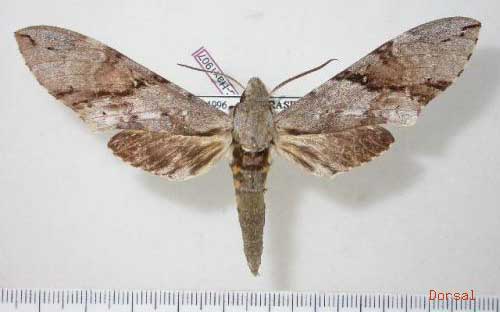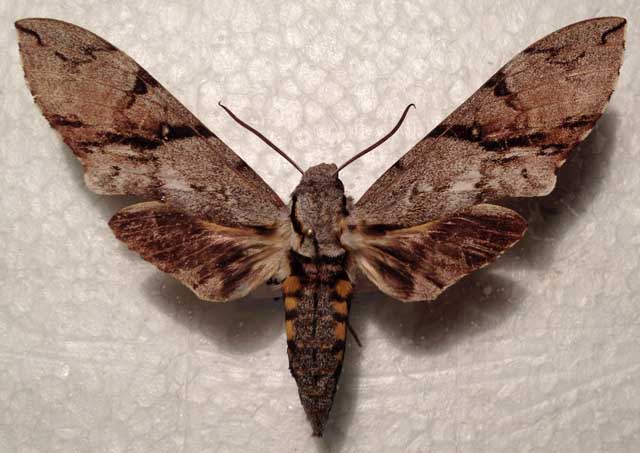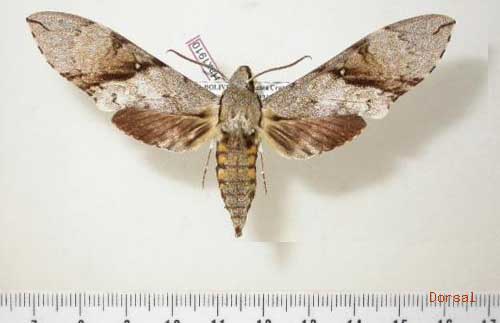Manduca incisa
Updated as per personal communication with Ezequiel Bustos (Shilap revta. lepid. 43 (172) diciembre, 2015, 615-631 eISSN 2340-4078 ISSN 0300-5267), January 4, 2016
Manduca incisa
(Walker, 1856)
Macrosila

Manduca incisa, courtesy of
All Leps Barcode of Life.
This site has been created by
Bill Oehlke at oehlkew@islandtelecom.com
Comments, suggestions and/or additional information are welcomed by Bill.
TAXONOMY:
Family: Sphingidae, Latreille, 1802
Subfamily: Sphinginae, Latreille, [1802]
Tribe: Sphingini, Latreille, 1802
Genus: Manduca Hubner, [1807] ...........
Species: incisa (Walker, 1856)
|
DISTRIBUTION:
Manduca incisa
flies in
Brazil (specimen type locality): Mato Grosso; Sao Paulo;
Bolivia: Ipati (1000m), Department of Santa Cruz; and in
Paraguay: Concepcion; San Pedro; Amambay; Canindeyu.
Vadim Kroutov adds a range into Misiones,
Argentina: Misiones, with the following image.

Manduca incisa male, 85mm, Misiones, Argentina,
courtesy of Vadim Kroutov.
May be distinguished from Manduca lefeburii by the possession of narrow black mesial line on the abdomen upperside; by the forewing upperside
being paler proximal to the transverse band than
distal to it; by the somewhat more conspicuous distal costal mark; and by the more extended apical line. CATE
FLIGHT TIMES:
Manduca incisa adults fly
ECLOSION:
Pupae probably wiggle to surface from subterranean chambers just prior to eclosion.

Manduca incisa, courtesy of
All Leps Barcode of Life.
SCENTING AND MATING:
Females call in the males with a pheromone released from a gland at the tip of
the abdomen. Adults take nectar from flowers.
EGGS, LARVAE, PUPAE:
Use your browser "Back" button to return to the previous page.
Return to Sphingidae Index
Return to Sphingini Tribe


